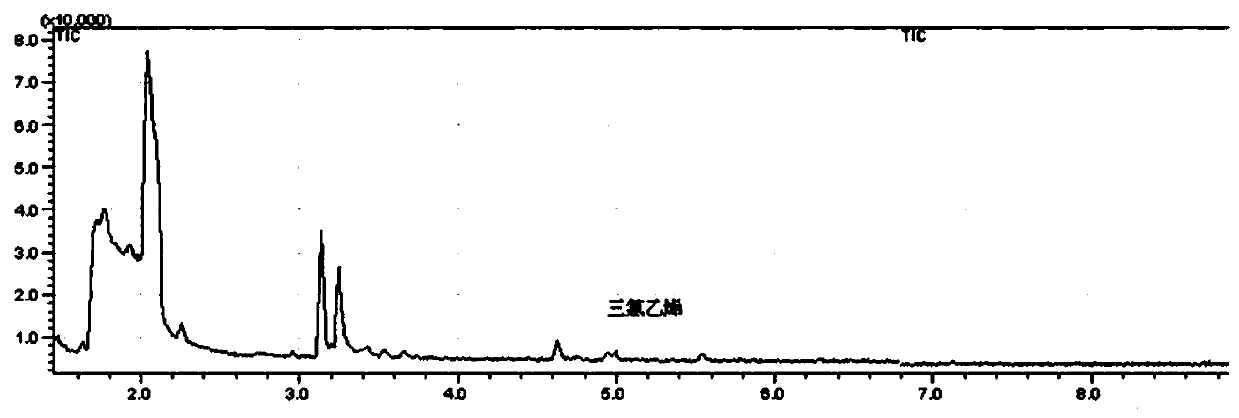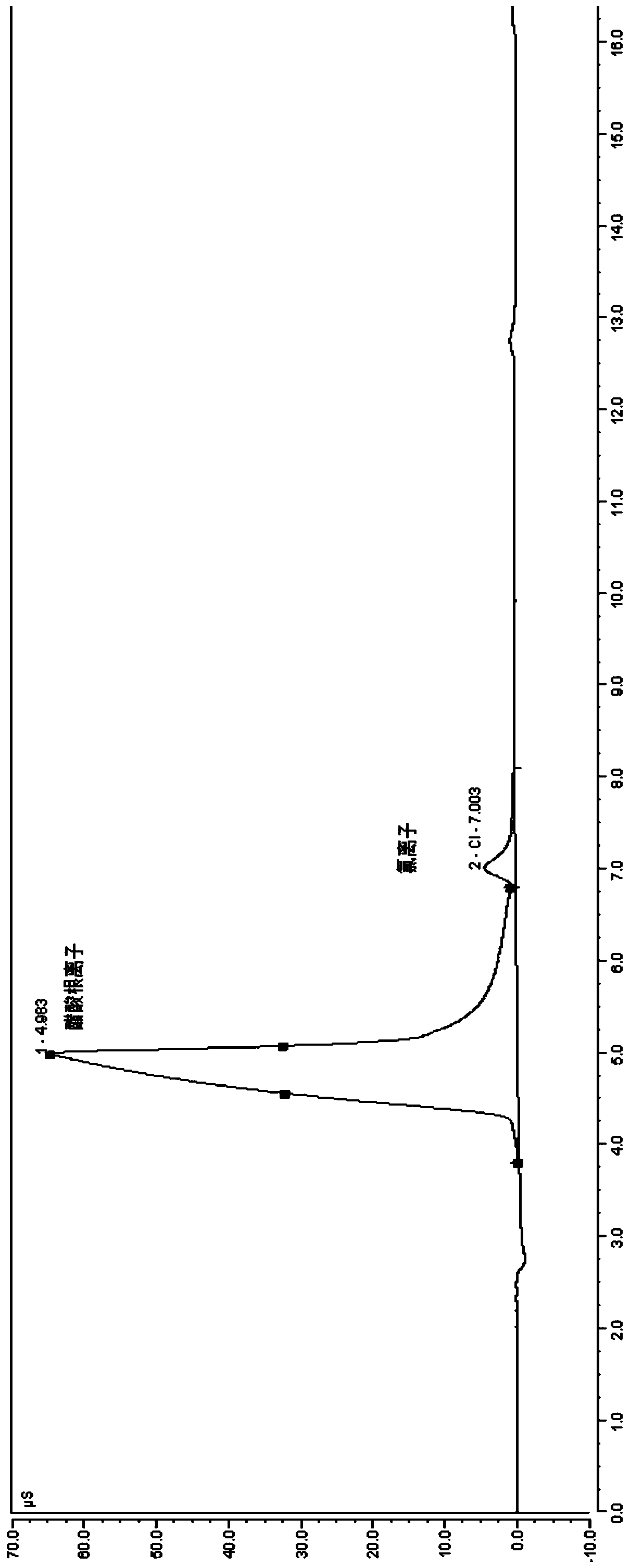Chlorine isotope analysis method for organic monomers in chlorinated organic compounds based on nano metal reduction
A technology of chlorinated organic substances and nano-metals, which is applied in the direction of analysis of materials, material separation, and measurement devices, can solve the problems of cumbersome oxidant removal process, unstable test results, and high risk factor, and achieve easy promotion, small risk factor, and transformation high efficiency effect
- Summary
- Abstract
- Description
- Claims
- Application Information
AI Technical Summary
Problems solved by technology
Method used
Image
Examples
Embodiment 1
[0042] The ratio of chlorine isotopes in the trichlorethylene (TCE) produced by three different reagent manufacturers (represented by A, B and C respectively) is measured, and the steps are as follows:
[0043] A. Prepare a 40mL reaction bottle, weigh 1.0g nanometer iron into the reaction bottle in a closed glove box under anaerobic conditions, fully stir and let it stand;
[0044] B. Add 0.01g palladium acetate to the reaction bottle and mix evenly, then quickly add 30mL of prepared trichlorethylene solution (concentration 30mg / L), tighten the reaction bottle and place it on a shaker for 1 hour of shaking reaction;
[0045] Use a gas chromatograph to analyze the residual trichlorethylene in the solution after the reaction to confirm whether the trichlorethylene is completely converted: because the activity of nano-iron or nano-zinc plays a very critical role in whether the reaction can be carried out completely, take step B 10 mL of the reacted sample solution was put into a ...
Embodiment 2
[0054] The ratio of chlorine isotopes in the tetrachlorethylene (PCE) produced by three different reagent manufacturers (represented by A, B, C) is measured, and the steps are as follows:
[0055] A. Prepare a 40mL reaction bottle, weigh 1.0g nanometer iron into the reaction bottle in a closed glove box under anaerobic conditions, fully stir and let it stand;
[0056] B. Add 0.01g of palladium acetate into the reaction bottle and mix evenly, then quickly add 30mL of prepared tetrachlorethylene solution (concentration: 30mg / L), tighten the reaction bottle and place it on a shaker for 1 hour of shaking reaction;
[0057] Adopt the same gas chromatographic method as example 1 to confirm the reaction efficiency of every batch of samples;
[0058] C, the complete solution is filtered through a microporous membrane with a pore size of 0.22 μm;
[0059] D. Separating and purifying the filtered solution by ion chromatography, collecting the distillate of the chloride ion peaking time...
PUM
| Property | Measurement | Unit |
|---|---|---|
| pore size | aaaaa | aaaaa |
Abstract
Description
Claims
Application Information
 Login to View More
Login to View More - R&D
- Intellectual Property
- Life Sciences
- Materials
- Tech Scout
- Unparalleled Data Quality
- Higher Quality Content
- 60% Fewer Hallucinations
Browse by: Latest US Patents, China's latest patents, Technical Efficacy Thesaurus, Application Domain, Technology Topic, Popular Technical Reports.
© 2025 PatSnap. All rights reserved.Legal|Privacy policy|Modern Slavery Act Transparency Statement|Sitemap|About US| Contact US: help@patsnap.com



